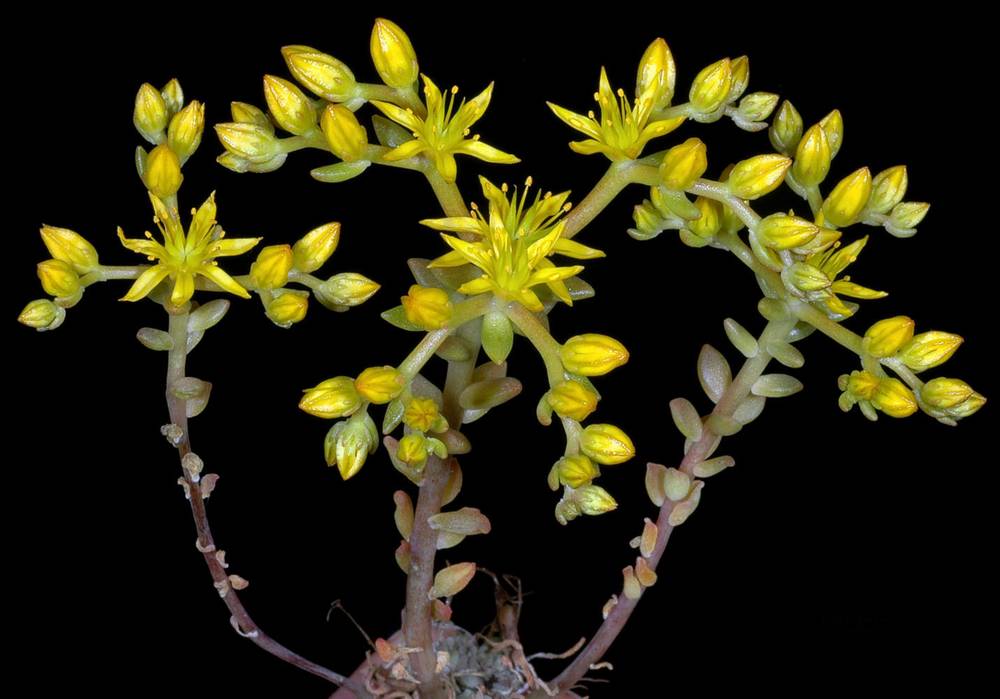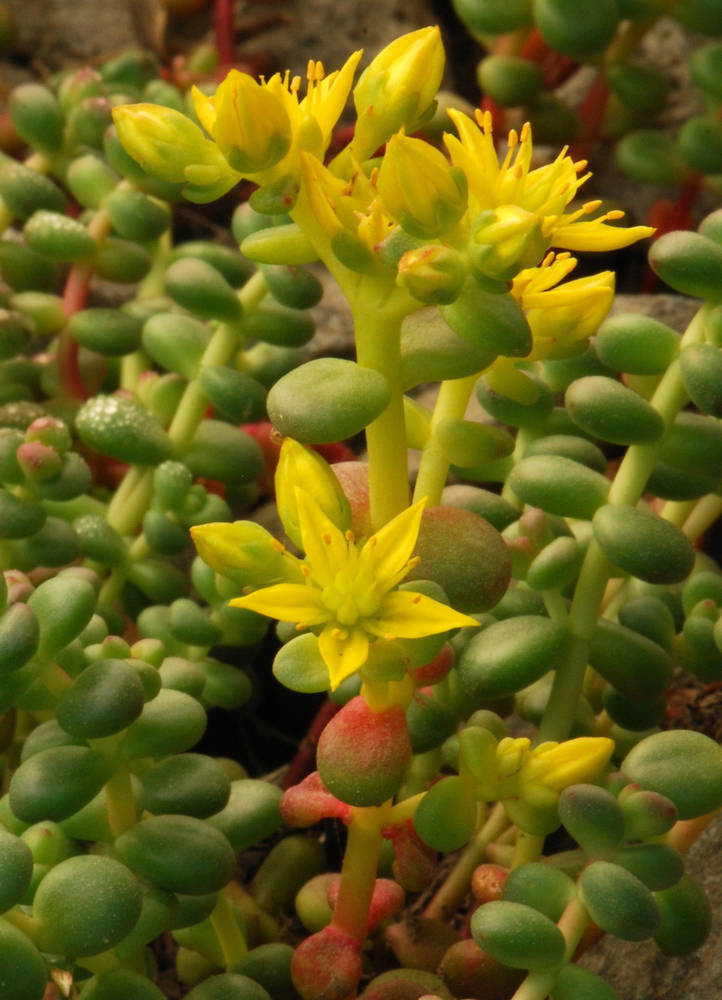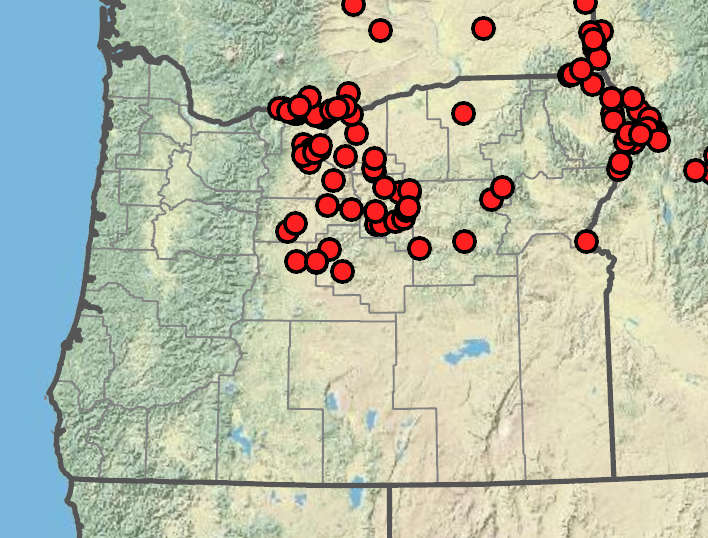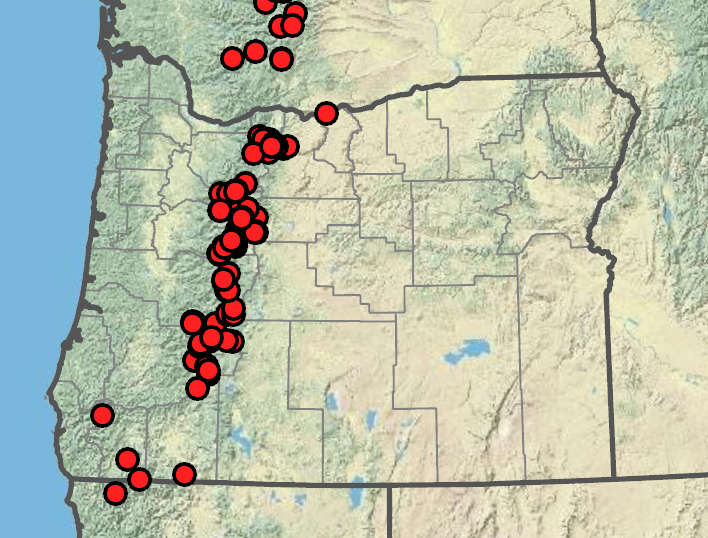Sedum leibergii
Sedum divergens
Leiberg's stonecrop
Cascade stonecrop, Pacific stonecrop, spreading stonecrop
horizontal; simple.
decumbent, becoming erect or ascending, branched; without rosettes.
erect; simple; (5)11–18 cm;
stem leaves alternate, not producing leafy bulbils in axils; ovate or elliptic; widest below middle, bases not spurred.
erect, rarely branched, 6–10 cm;
stem leaves suborbicular to obovate or oblong, dried stems 1.5–2 mm thick.
rosette leaves deciduous, spreading, narrowly oblanceolate, 2–16 × 1.4–3.2 mm, green or greenish white, bases not spurred;
tips blunt;
surfaces papillose, not glaucous.
opposite, rarely alternate, 2-ranked, suborbicular to obovate or oblong, subterete; ± globular, 4–9 × 4–6 mm, green or red, bases slightly clasping;
tips rounded;
surfaces not glaucous; shiny.
cymes with 5–60 flowers, 3–6-branched;
branches often strongly recurved; each 1–3 times dichotomously forked;
bracts like stem leaves but smaller.
cymes with 5–25 flowers, 2–3-branched;
branches recurved to erect;
bracts similar to other leaves or elliptic to broadly lanceolate, 2–5 mm.
(5)6(7)-parted;
sepals ovate, 1.5–2 × 0.7–1.1 mm, green;
tips acute;
petals spreading, separate nearly to base, lanceolate to oblong, 4–6 mm, yellow;
keel green or dark red;
tips subobtuse to acute;
filaments yellow;
anthers yellow;
ovaries glandular-pustulose.
5(7)-parted;
sepals ovate, 2–3 × 1.5–2 mm, green;
tips obtuse;
petals erect basally, widely spreading from about middle, usually distinct; narrow; ~5 mm, yellow;
tips acute or obtuse and with an apiculus;
filaments yellow;
anthers yellow.
widely spreading when mature, fused near base, glandular-pustulose.
widely spreading, fused at base, red or reddish brown to straw-colored.
=16.
=16.
Sedum leibergii
Sedum divergens
Cliffs, rocky slopes, on basalt or limestone. Flowering Apr–Jul. 50–1800 m. BW, Col, ECas, Lava, Owy. ID, WA. Native.
Sedum leibergii is a small, yellow-flowered Sedum like S. lanceolatum, S. radiatum, or S. stenopetalum. Unlike those species, S. leibergii has distinctly glandular-pustulose follicles. Additionally, S. leibergii does not produce offsets in the axils of stem leaves like S. stenopetalum.
Rocky slopes, talus, lava. Flowering Jun–Aug. 1200–2300 m. Casc, Sisk. CA, WA; north to AK, northeast to Alberta. Native.
Within this species, each pair of leaves is at a right angle to the pair below it, forming two columns of almost round, green to red leaves. This leaf arrangement is unique among our native Sedum. Sedum debile has opposite leaves, but they are glaucous and often whitish, and they form ball-like rosettes. The two species do not overlap in range. Sedum divergens may recall particularly thick-leaved individuals of S. oreganum, but the latter species does not have such neat columns of leaves, and its petals are much longer and nearly erect.
Barbara Wilson, Richard Brainerd, Nick Otting
Barbara Wilson, Richard Brainerd, Nick Otting
- Local floras:
BC,
CA,
OR,
WA
- Local Web sites:
CalFlora,
CalPhotos,
Flora NW,
PNW Herbaria,
Turner Photog.
WildflowerSearch
iNaturalist (observations)
USDA Plants Database
- LBJ Wildflower Center
- SEINet
- Plants of the World Online
- Encyclopedia of Life
- Wikipedia
- Google Image Search





